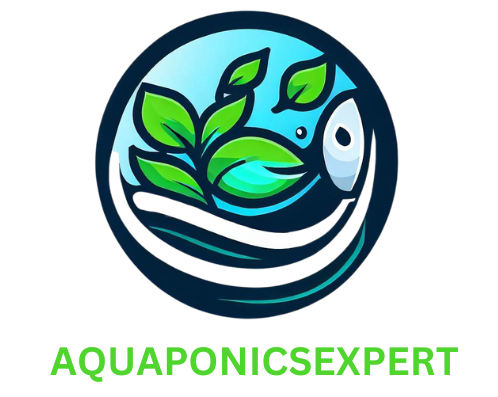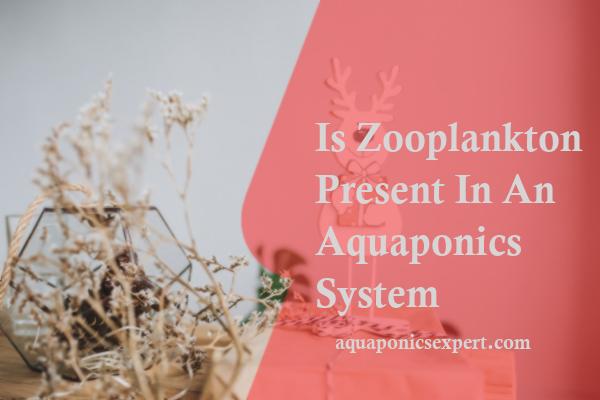How Many People Does An Aquaponics Farm Feed
An aquaponics farm is a revolutionary method of sustainable food production that seamlessly combines aquaculture (raising fish) and hydroponics (growing plants in water) in a symbiotic system. This innovative approach has gained significant popularity in recent years, as it offers numerous benefits including efficient resource utilization, reduced environmental impact, and continuous year-round production. Among the questions frequently asked by those interested in aquaponics is, **how many people can an aquaponics farm feed?** Well, let’s explore this intriguing query together and unveil the incredible potential of this groundbreaking farming method.
How Many People Does An Aquaponics Farm Feed
An aquaponics farm is a sustainable system that combines aquaculture (the farming of fish) and hydroponics (the cultivation of plants in water) to create a mutually beneficial ecosystem. The fish waste provides nutrients for the plants, and the plants help purify the water for the fish. One of the major advantages of aquaponics is its ability to produce a significant amount of food in a small space. The actual number of people an aquaponics farm can feed depends on various factors such as the size of the farm, the types of fish and plants cultivated, and the efficiency of the system.
The production capacity of an aquaponics farm can range from small-scale systems that feed a few families to large commercial operations that can provide food for entire communities or even cities. For instance, a small-scale aquaponics setup with a few square meters of grow bed area and a small fish tank can potentially provide fresh vegetables and fish for a family of four throughout the year. On the other hand, large commercial aquaponics farms, covering several hectares of land and utilizing multiple fish tanks and grow beds, are capable of sustaining hundreds or even thousands of people.
Factors such as the choice of crops and fish species, system efficiency, and managerial skills play a crucial role in determining the productivity of an aquaponics farm. Additionally, climate conditions and geographical location can impact the farming process, as external factors like temperature and sunlight affect the growth rate of plants and fish. To maximize the production and sustainability of an aquaponics farm, it is essential to continually optimize and fine-tune the system through monitoring and research.
Overall, aquaponics has the potential to significantly contribute to food production, both on a small and large scale. Its ability to produce a high yield of fresh and nutritious food with minimal environmental impact makes it an attractive option for addressing food security and sustainability challenges. Further research and technological advancements in this field hold the promise of enhancing the efficiency and productivity of aquaponics systems, ultimately helping to feed more people in a more sustainable manner.
How Does Aquaponics Farming Contribute To Food Security?
An aquaponics farm is a sustainable system that combines aquaculture (fish farming) with hydroponics (cultivating plants in water). This unique method allows for the production of both fish and vegetables concurrently, providing a diverse and nutritious food source. The number of people an aquaponics farm can feed depends on several factors, such as the size of the farm, the types of crops grown, and the fish species raised.
In terms of square footage, a well-functioning aquaponics farm can produce higher yields compared to traditional agriculture systems. For instance, one square foot of aquaponic growing area can produce up to four times the amount of crops compared to traditional farming methods. Additionally, the yield can be further increased using vertical farming techniques, where plants are grown in stacked layers, optimizing space utilization.
Considering the potential productivity of an aquaponics farm, it is difficult to provide an exact number of people that can be fed. However, on average, a small-scale aquaponics system measuring around 500 to 1,000 square feet can provide fresh produce for 20-30 people. Larger commercial aquaponics farms, spanning several thousand square feet, can feed anywhere from a few hundred to several thousand people. Ultimately, the capacity of an aquaponics farm to feed people is determined by its scale, efficiency, and management.
What Is The Average Yield Of An Aquaponics Farm In Terms Of Feeding People?
An aquaponics farm is a sustainable method of food production that combines aquaculture (raising aquatic animals) with hydroponics (growing plants in water). This innovative system creates a symbiotic relationship between the fish and plants, where the fish waste provides nutrients for the plants, while the plants purify the water for the fish. Due to its efficiency and ability to grow food in limited spaces, aquaponics farms have the potential to feed a significant number of people.
The number of individuals an aquaponics farm can feed depends on various factors, including the size of the farm, the types of plants and fish being grown, and the level of maintenance and optimization of the system. A well-designed and properly managed aquaponics setup can produce a higher yield of food compared to traditional farming methods. This is due to the controlled environment, year-round production, and the absence of soil-borne diseases. As a result, a small-scale aquaponics farm could provide a substantial amount of fresh produce and protein-rich fish to supply a single household’s needs.
On a larger scale, commercial aquaponics farms can produce even more significant yields and feed a larger population. By utilizing vertical growing techniques and maximizing the use of available space, these farms can intensify food production. However, it is important to note that the number of people an aquaponics farm can feed is highly variable and dependent on factors such as the availability of resources, energy supply, and the specific goals of the farm. Ultimately, the development and widespread adoption of aquaponics technology have the potential to contribute to more sustainable and efficient food production systems, benefiting communities and providing access to fresh, nutritious food.
How Does The Size Of An Aquaponics Farm Affect Its Capacity To Feed People?
An aquaponics farm is a sustainable and innovative method of food production that combines aquaculture (raising fish) and hydroponics (growing plants without soil). This system creates a symbiotic relationship between fish and plants, where the fish waste provides nutrients for the plants, while the plants filter and purify the water for the fish. The efficiency and productivity of aquaponics make it an excellent solution for feeding a considerable number of people.
The exact number of people that an aquaponics farm can feed depends on various factors such as the size of the farm, the types of fish and plants being cultivated, and the efficiency of the system. On average, a well-designed and adequately managed aquaponics farm can feed 2-4 times more people compared to traditional farming methods on the same land area. This is primarily due to the year-round production and higher crop yields from aquaponics, as well as the additional source of protein provided by the fish.
For instance, a small-scale aquaponics farm with a 1000-square-foot growing area can potentially produce 10-20 pounds of fish and 200-400 pounds of vegetables and herbs every year. Considering the general recommendation of consuming 0.5-1 pound of vegetables and 0.15-0.25 pound of fish per person per day, this could provide enough food for approximately 20-40 people. However, by scaling up the size of the farm and optimizing its operations, aquaponics systems can be built to feed hundreds or even thousands of people while utilizing minimal resources and space.
Are There Any Successful Examples Of Large-Scale Aquaponics Farms Feeding A Significant Number Of People?
An aquaponics farm can significantly contribute to food production by utilizing fish waste to fertilize and nourish plants. The number of people an aquaponics farm can feed depends on various factors such as the system’s size, capacity, and crop selection. Generally, a small-scale aquaponics farm with a few tanks and growing beds can provide fresh vegetables and fish for a single household or a small group of individuals.
However, larger commercial aquaponics farms can produce a substantial amount of food and supply it to a larger community. These farms can have multiple large tanks filled with fish and multiple layers of growing beds. The number of people a large-scale aquaponics farm can feed can vary significantly depending on the size of the farm’s production area and the crop selection. With efficient management and optimal utilization of space, a medium-sized aquaponics farm can potentially feed dozens, if not hundreds, of people on a continuous basis.
It’s important to note that the efficiency and productivity of aquaponics systems can vary depending on the expertise of the operators, the quality of the system design, and the availability of resources. With advanced techniques and technologies, such as vertical farming and optimized nutrient cycling, aquaponics farms have the potential to further increase their food production capacity and feed even larger populations in the future.
Can Aquaponics Farms Be A Sustainable Solution To Global Hunger?
An aquaponics farm is a sustainable agricultural system that combines aquaculture (the raising of fish) and hydroponics (the cultivation of plants in water) in a symbiotic environment. The fish waste produced in the aquaculture tanks provides nutrients for the plants, which in turn purify the water for the fish. This closed-loop system allows for the year-round production of both fish and vegetables in a controlled environment.
The number of people an aquaponics farm can feed depends on various factors such as the size of the system, the type of crops grown, and the type of fish raised. On average, a properly managed aquaponics farm can produce 1-2 pounds of fish per square foot and around 8-10 pounds of vegetables per square foot annually. This means that an aquaponics farm with a 1,000 square foot growing area could potentially yield 1,000-2,000 pounds of fish and 8,000-10,000 pounds of vegetables each year.
Considering that the recommended annual protein intake per capita is around 88 pounds (40 kg) and the average person consumes approximately 330 pounds (150 kg) of vegetables per year, a 1,000 square foot aquaponics farm could theoretically feed around 10-20 people solely on the fish produced and 24-30 people exclusively based on the vegetable production. However, these calculations are based on ideal conditions, and factors such as crop rotation, climate, and the specific dietary needs of individuals should be taken into account to determine the exact number of people an aquaponics farm can feed.
Conclusion
In conclusion, the ability of an aquaponics farm to feed people can vary depending on several factors such as the size and efficiency of the system, the chosen fish and plant species, and the management practices in place. However, when implemented correctly, an aquaponics farm has the potential to sustainably feed a significant number of individuals. The integration of fish and plant cultivation in a closed-loop system allows for a symbiotic relationship that maximizes the use of resources and minimizes waste. By harnessing the power of aquaponics, food production can be achieved year-round, even in regions with limited access to fertile land or during unfavorable weather conditions. Additionally, the compact nature of aquaponics systems enables them to thrive in urban environments, offering the potential for fresh, locally sourced food in densely populated areas. While the precise number of individuals an aquaponics farm can feed may vary, this innovative approach to farming presents a promising solution to the challenges of food security and sustainability.







